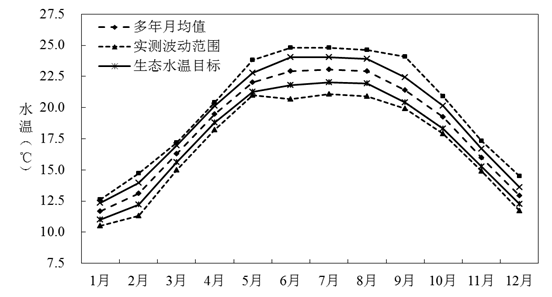Background
The middle and upper reaches of the Yangtze River are the base of original fish species and a typical representative of biodiversity in China. However, with the development of the Gezhouba Dam, the Three Gorges Dam and the Jinsha River cascade dams, the construction and operation of high dams have blocked the longitudinal continuity of the river and caused longitudinal disconnectivity and habitat fragmentation. At the same time, due to the closure of the dam, riverbed load and morphology have greatly changed, which undermines the quality of offspring habitat in downstream rivers. The scientific research on fish habitat characteristics and conservation measures is urgently needed to protect the fish habitat in the middle and upper reaches of the Yangtze River. This study examines the ecological water requirements of fish reproduction based on the research of eco-hydrological requirements of typical fish reproduction, and explores the improvement of dispatching large-scale water conservancy and hydropower projects, so as to provide technical support for fish protection in the upper and middle reaches of the Yangtze River.
Contents
· Investigating the key habitat factors that affect the reproduction of the four major domestic fishes and Chinese sturgeons and the eco-hydrological requirements for their production;
· Proposing the technical scheme for ecological scheduling to compensate for the aquatic organism reproduction conditions in downstream rivers;
· Examining the regulation of ecological water requirements by cascade reservoirs in the lower Jinsha River in response to the fish protection needs of state-level natural reserves of rare and endemic fish in the upper reaches of the Yangtze River; and
· Analyzing the environmental characteristics and main influencing factors of typical fish habitat.
Achievements
· The reproduction time-scale response relationship of four major domestic fishes and Chinese sturgeons amid the change of hydrological process and water temperature has been quantified based on the data mining method, and the environmental flow requirements of the four major domestic fish concluded;
· A multi-objective optimal scheduling model for the Three Gorges Reservoir has been established and solved in order to compensate for the aquatic organism reproduction conditions in downstream rivers;
· The range of variability approach (RVA) in ecohydrology has been adopted to identify the ecological water temperature requirements of various fish species in the reserves;
· An indicator system that describes the mating site geomorphology of mainstream fish in the reserves has been established; and
· The geomorphological preference of mainstream fish in the reserves during the breeding season has been revealed.
Application
The findings of the Study on Key Environmental Factors for Reproduction and Growth of Rare and Endemic Species and the Demonstration Study on Ecological Dispatch of Three Gorges-Gezhouba Cascade Hydropower Development have been adopted by the China Three Gorges Corporation. In the experimental ecological dispatch of the Three Gorges Reservoir carried out during 2011-2017 for natural reproduction of the four major domestic fish, there is a noticeable improvement in the scale of reproduction in the middle Yangtze River compared with before, which not only increases the early resources of the four major domestic fish and produces significant ecological and socio-economic benefits.

Distribution of mating site centers, pools and riffles in the upper Yangtze River

Topography, flow velocity and water depth requirements of Chinese sturgeon mating sites

Water temperature requirements for fish breeding


Modeled dispatching process during the breeding season of the four major domestic fish

Three Gorges Reservoir Ecological Regulation Scheme